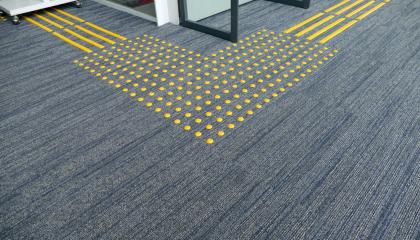Amusement parks are meant to be fun for everyone, but that can be difficult to ensure for individuals with disabilities. Due to the public nature of amusement and theme parks, they fall under the jurisdiction of the Americans with Disabilities Act (ADA), meaning that they must meet certain accessibility guidelines. The ADA provides standards for the creation and use of amusement rides, water rides, swimming pools, and so much more.
On Monday, March 18th, Google Doodle featured the Japanese inventor of detectable dome tiles, Seiichi Miyake. His invention changed the world by empowering and protecting individuals with visual impairments to cross streets with greater ease. Fifty-two years have passed since the first dome tiles were installed, and these detectable warning tiles are now part of many cities throughout the world.
Just as societies innately understand the subtle rules of social interaction, there is also an etiquette for interacting with a blind person or someone with low vision. People with vision often struggle to interact with others who have vision impairment. People freeze, uncertain of what to do, or communicate in a demoralizing way. But that doesn’t have to be the case.
People with vision need to know how to best interact with someone who cannot see, and these social cues can be a helpful guide to making a city more accessible.
Pagination
- Previous page
- Page 3
Connect with us
We pride ourselves on our customer service, and we'd love to hear from you! Sign up for our newsletter to keep up with industry updates and trends, as well as any new product releases.





